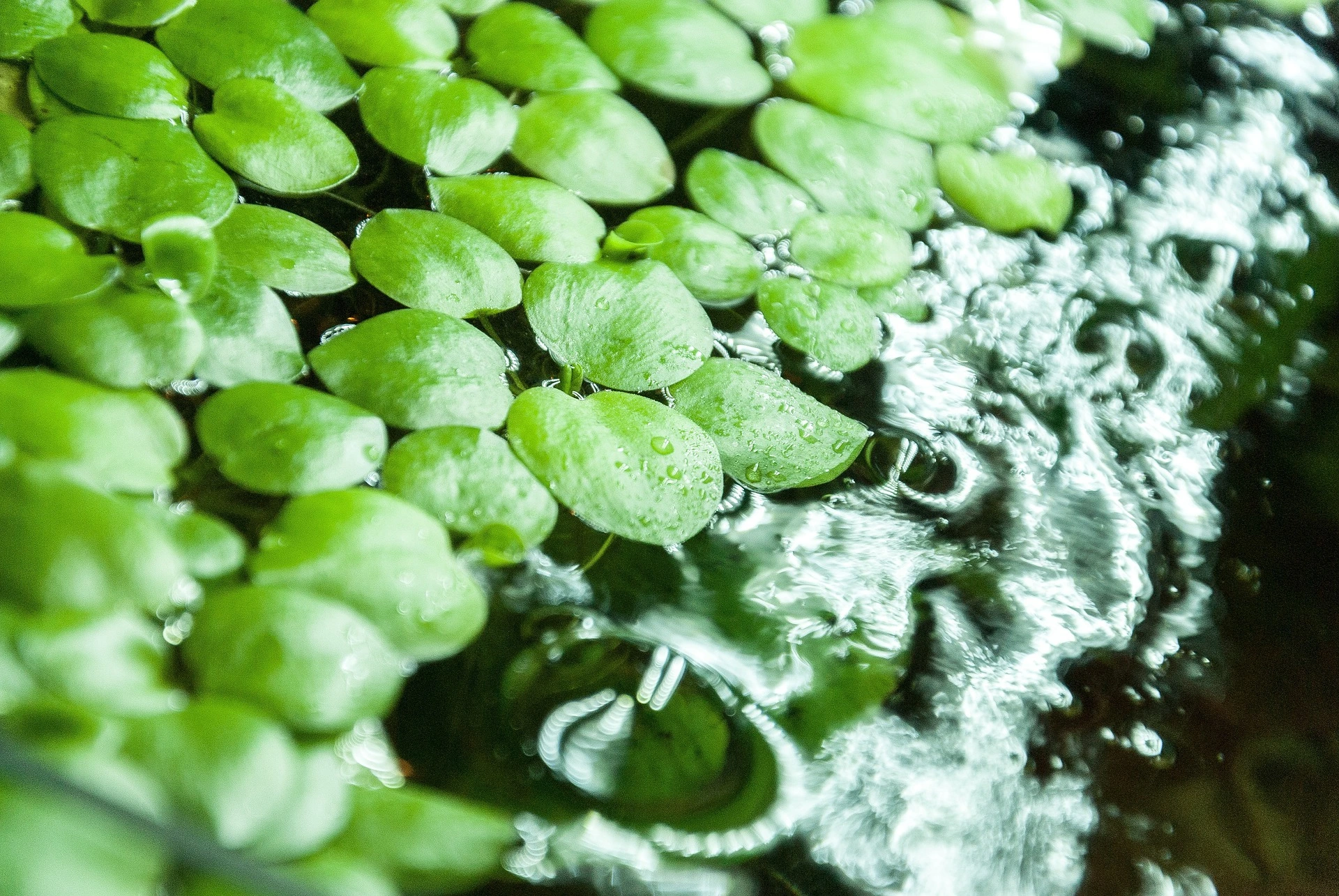

Floating plants
Floating plants are very popular in aquariums of any size. They are often needed to provide protection from enemies for small animals such as baby fish or shrimp. However, there are a few other reasons why these plants are found in many tanks. Some fish like mosaic gourami need the plants to make them feel comfortable or to build nests. More often these are also added to the water just for aesthetic reasons. These plants are very good at regulating how much light can enter the aquarium. In addition, like other plants, they also draw nutrients from the water. These two properties ensure that floating plants are very effective against algae and can make a significant contribution in combating them.
Popular floating plants in the aquarium
- Frogbit (Limnobium laevigatum)
- Small duckweed (Lemna minor)
- Water Lettuce (Pistia stratiotes)
- Floating spurge (Phyllanthus fluitans)
Frogbit (Limnobium laevigatum)
This floating plant is perfect for any aquarium. It grows up to 15 cm in diameter, however it stays relatively flat on the water surface. The size makes it easy to remove individual specimens if they cover too much of the surface. The roots of these plants grow extremely fast, so they often need to be cut back, as they can reach the bottom of the tank in a short time and continue to grow there. The frogbit makes little demand on the water values(GH < 30 °dH, KH < 14 °dH) and temperature(10-28 °C), which allows the plant to grow without problems in almost any tank.
Small duckweed (Lemna minor)
The small duckweed, as the name suggests, remains very small (3-4 mm). Also tiny remain the roots of this plant, which usually grow only a few cm long. However, due to its rapid reproduction, it is suitable for large tanks as well as for smaller tanks or even nano aquariums. Due to its size and rapid increase in specimens, however, it must be noted that this plant is difficult to remove from a tank, as a single small duckweed is sufficient to occupy the entire water surface for an extended period of time. Lemna minor have hardly any requirements for water values(KH < 25 °dH) and temperature(10-28 °C), which is why they can quickly become a nuisance in any tank. However, there are also animals that see the small duckweed as food and eat it partially.
Water lettuce (Pistia stratiotes)
Water lettuce can grow up to 20 cm in diameter, which makes them more suitable for larger aquariums or even a pond. Depending on the light intensity, the leaves can lie flat on the water surface or stretch towards the light source. The roots grow relatively long, similar to frogbit, so regular shortening is necessary if the excessively long roots interfere with the view into the tank. This plant is also not very demanding in terms of water values(GH < 20 °dH, KH < 15 °dH) and temperature(15-30 °C), so it will grow well in just about any tank. However, water lettuce often do not tolerate dripping water, so an aquarium without a cover is recommended.
Floating spurge (Phyllanthus fluitans)
This plant usually remains relatively small (max. 5 cm). As a result, it is often used in nano aquariums. It should be noted with the floating spurge that a higher light intensity is needed compared to the other floating plants. Strong light causes this plant to turn reddish, which can create a very nice contrast in a tank. Due to the origin of the floating plant, it requires rather warmer water(25-31 °C). Also with this plant it should be noted that there is as little as possible dripping water.